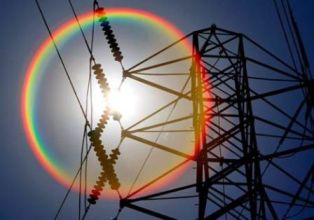Categories: Featured Articles » Interesting electrical news
Number of views: 12051
Comments on the article: 1
The largest lithium battery in the world
 In early November 2014, California-based energy company Southern California Edison announced its decision to enter into a 20-year contract with AES Energy Storage, a manufacturer of battery-powered electric energy storage systems. AES already manages the world's largest commercial battery network, each with 200 megawatt-hour capacity.
In early November 2014, California-based energy company Southern California Edison announced its decision to enter into a 20-year contract with AES Energy Storage, a manufacturer of battery-powered electric energy storage systems. AES already manages the world's largest commercial battery network, each with 200 megawatt-hour capacity.
The company claims that the total capacity of currently developed batteries around the world is approximately 1 GWh. In this regard, the parent company AES Corporation received $ 16 billion in revenue last year. However, the now planned project will have to surpass all previous facilities ever built by the company.
A huge 400 megawatt-hour battery will be built south of Los Angeles, in Long Beach, at the Alamitos Power Center. It will have to provide peak loads, replacing outdated electric generators, the effectiveness of which no longer made it possible to reliably maintain power supply to Los Angeles and the surrounding territories.
The old peak gas turbine generators that Southern California Edison had previously used have been operating for a very long time, and servicing them is a very costly undertaking due to exhaustion of their resources. The newly built battery power plant, in turn, will be able to deliver 100 MW of electric power to the energy system within four hours, providing an influx of additional energy at the moments of its peak consumption.

For example, the world's largest battery built before, was created by Chinese companies State Grid Corporation of China (SGCC) and BYD. It has a capacity of 36 megawatt hours, which is only 9 percent of the battery capacity to be built in Long Beach. This landmark change in Southern California Edison’s approach to energy conservation will result in the construction of the world's largest electrochemical battery in a few years.
The system will consist of modules that will include thousands of individual lithium ion battery cells. This will make it possible to quickly connect or disconnect individual groups of batteries from the network, quickly and safely perform maintenance and replace failed or exhausted battery cells.
According to the plan, the battery station in Alamitos Power Center will be commissioned in stages, each time increasing capacity, and it will work in full force by 2021.
New technology for providing new solutions with zero emissions and without the use of water. This approach was developed by AES for many years, and the first such system on lithium-ion batteries was built by it in 2008. The modules were made compact, connected in parallel to provide a high level of reliability and a convenient way of both a set of elements and their rapid replacement.
What makes this project the first of its kind is the use of lithium-ion technology with the possibility of a long working time. Most of the large-scale lithium-ion systems used so far can only work for two hours or less.
The largest commissioned battery in North America at the moment is the recently unveiled 32 megawatt-hour Southern California Edison lithium-ion demonstration project, operating at a substation in the Tehachapi Mountains.
Southern California Edison has been using an 8 MW lithium-ion battery there, with a capacity of 32 megawatt hours from LG Chem since 2010. The area around the Tehachapi Mountains, where the project is located, has the potential to produce up to 4.5 gigawatts of wind energy by 2016.

A similar project was commissioned in 2003 in Fairbanks, Alaska. There, a 5230 volt battery of nickel-cadmium cells was created.
The battery occupies a building measuring 150 by 36 meters, where 4 rows of batteries are located, in each row there are 3440 cells. These are 13760 individual 1.2-volt nickel-cadmium cells.
Alaska is not connected to 48 continental states, and only one line runs from the city of Anchorage to Fairbanks. In winter, the temperature in Alaska reaches minus 40-45 degrees. At such a low temperature, houses, water supply and heating systems can freeze in 4-5 hours. The battery system can consume 27 megawatts for 15 minutes, during which time the electric company will be able to solve the problem with power supply, and this time will be enough for people to turn on home generators.
The life of nickel-cadmium batteries used here is up to 30 years, and thousands of recharges are permissible. All the time this battery is maintained in a charged state, and in the event of an accident it is connected to an inverter, which increases and converts the voltage into alternating current, supplying 138,000 volts to the power line. For the first 4 years of operation, the station helped residents survive 217 incidents related to power outages.
See also at bgv.electricianexp.com
:
